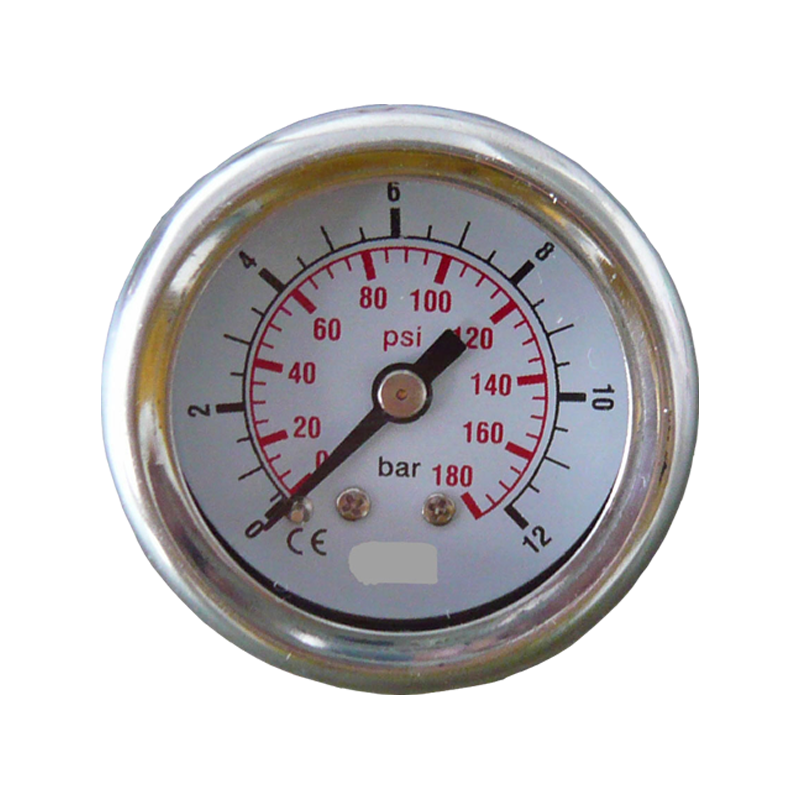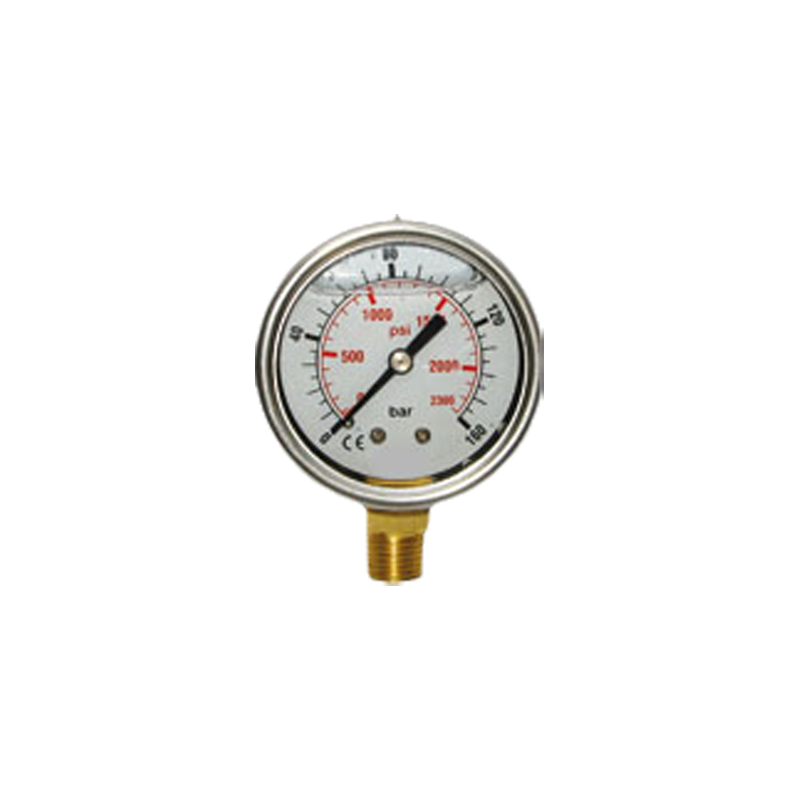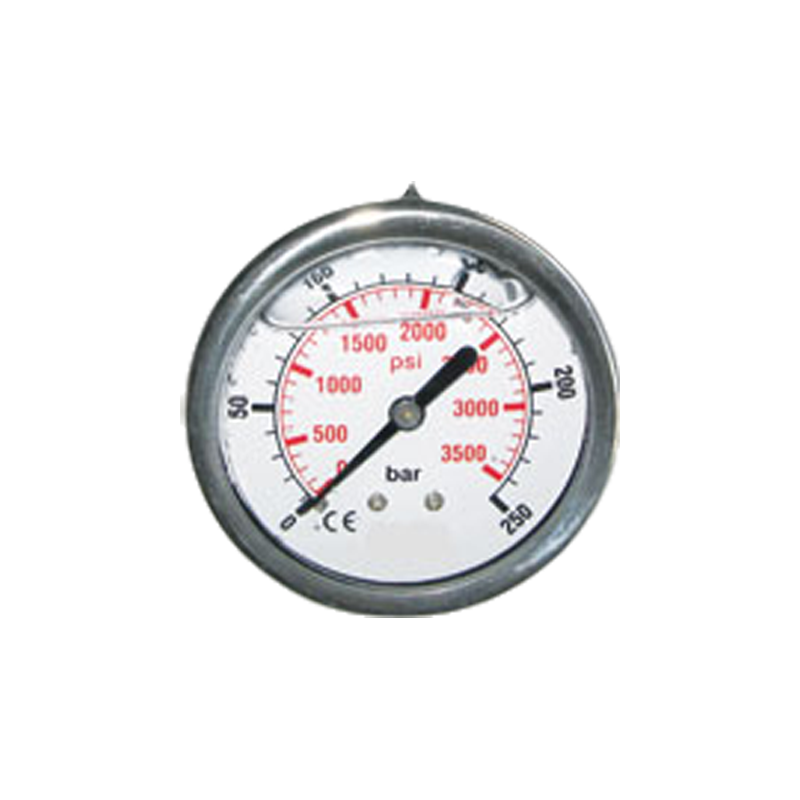The stainless steel rear-entry liquid-filled pressure gauge is an instrument used to measure fluid p...
ABOUT US
14YEARS OF
EXPERIENCE
About Us
Coming From China, Marketing To The World.
Ningbo Yinzhou Baige Machinery Manufacturing Co., Ltd. is established in 2011 and is located in Ningbo, Zhejiang Province, China, adjacent to Ningbo Port and Shanghai Port, with convenient transportation.
As a famous China Pressure Gauge Manufacturers and Pressure Gauge Suppliers, we specialize in the production of spray guns, gun barrels, connectors, quick couplings, pipe reelers and accessories, nozzles, rotary sprayers, pressure gauges, chemical sprayers, filters, telescopic rods, water brooms, foam spray pots, foam generators, liquid injectors, atomizers, household accessories, high-pressure hoses and assemblies and other cleaning machine accessories.
The company has a factory area of 5000 square meters, more than 50 types of production equipment, and more than 50 employees. We continuously improve the performance and quality of our products, and now have a "Quality Management System Certificate" that meets the requirements of GB/T 19001-2016/ISO 9001:2015.
We have a dedicated team of engineers to improve existing products, research new products to meet more features and requirements, and we are constantly developing new products every year. We also provide customized services. If you have OEM and ODM requirements, please contact us.
In the past few years, our company has gained the trust and support of a large number of customers with strong research and development capabilities, good quality, timely delivery, and excellent service, and our business scale has continued to expand. In the future, we look forward to working together with more partners from around the world to create a mutually beneficial and win-win future.
NEWS
-
How does the Ball Quick Coupling prevent backflow or reverse flow when disconnecting the hoses or pipes?
Internal Check Valve System The internal check valve is one of the most crucial elements in preventing backflow or reverse flow in Ball Quick Coupling. When the coupling is engaged, the valve allows fluid to flow in only one direction, typically from the source to the application. Upon disconnection...
READ MORE -
How does the locking mechanism of Bayonet Adapter balance ease of installation with secure retention for critical components?
Precision Engineering for Controlled EngagementThe locking mechanism of Bayonet Adapter relies on meticulously engineered lugs and corresponding slots that guide the engagement process. When the adapter is inserted into its mating socket, it aligns precisely due to the design of the lugs, ensuring a...
READ MORE -
How does the rear entry design of the Stainless Steel Rear Entry Pressure Gauge improve installation flexibility in tight or confined spaces?
Space Optimization in Confined Areas The rear entry design of the Stainless Steel Rear Entry Pressure Gauge allows the connection to be made at the back of the gauge, eliminating the need for front clearance during installation. This is particularly advantageous in compact industrial environments, s...
READ MORE
Message Feedback
Industry Knowledge Extension
A pressure gauge is a device used to measure the pressure of gas, liquid or steam. It is essential in applications such as industry, manufacturing, chemical industry, petroleum, food processing, etc. The working principle of a pressure gauge usually relies on the measurement of a certain physical effect, and can convert pressure signals into readable pressure values through physical, mechanical or electronic sensors.
1.1 Bourdon tube principle
Bourdon tube pressure gauge is one of the most common mechanical pressure gauges. Its principle is based on the elastic deformation of the bourdon tube. The bourdon tube is a curved metal tube. When both ends are fixed, as the pressure in the tube increases, the pipe will try to return to its original shape, resulting in an increase in the degree of bending of the pipe. This deformation is converted into a pressure indication through gears, levers and other devices.
Working principle: One end of the bourdon tube is connected to the measured pressure source, and the other end is connected to the pointer and its drive device. When the pressure of the gas or liquid in the tube changes, the degree of bending of the bourdon tube changes, and this deformation is converted into the displacement of the pointer through a mechanical device, thereby displaying the pressure on the dial.
1.2 Bellows Principle
The bellows pressure gauge is another mechanical pressure gauge that uses a bellows as a pressure sensing element. A bellows is a thin metal tube with a pleated structure and good elasticity. When the internal pressure changes, the degree of deformation of the bellows is proportional to the pressure.
Working principle: The pressure change in the bellows causes the bellows to stretch or compress, changing its shape. This change is converted into the displacement of the pointer through a lever or gear device, and finally the pressure value is displayed on the dial. Bellows are usually used for low pressure measurement because they are less adaptable to high pressure environments.
1.3 Diaphragm Principle
Diaphragm pressure gauges usually use a flexible diaphragm as a pressure sensing element. The diaphragm may be made of metal or other synthetic materials and usually has a two-layer or multi-layer structure. The degree of deformation of the diaphragm is directly related to the external pressure and can effectively transmit pressure changes.
Working principle: The diaphragm undergoes elastic deformation under the action of internal pressure. As the diaphragm deforms, the pressure change causes a signal transmission device (such as a lever or potentiometer) to convert the deformation into the displacement of the pointer, thereby displaying the pressure on the dial. Diaphragm pressure gauges are particularly suitable for measuring small pressures.
1.4 Resistive pressure sensor
In modern digital pressure gauges, resistive sensors are widely used. The principle is to use the response of strain gauges to pressure. Strain gauges are components that cause changes in resistance value due to slight deformation of materials. Changes in pressure cause the strain gauge to deform, thereby causing changes in resistance, which are then processed by electronic circuits to generate digital signals to display pressure values.
Working principle: Under the action of pressure, the strain gauge deforms, causing its resistance to change. The resistance change is converted into an electrical signal, which is converted into a pressure value by a digital processing unit, and finally transmitted to external devices through a digital display or communication interface.
As an important industrial measuring instrument, the accuracy of pressure gauges directly affects the safe operation and production efficiency of equipment. Whether it is used for chemical equipment, oil drilling, or automated control systems, the failure of pressure gauges may cause serious production problems. Therefore, correct maintenance and care are the key to ensure its long-term stable operation.
2.1 Regular calibration and verification
During long-term use, the accuracy of pressure gauges will be affected by many factors, such as ambient temperature, humidity changes, mechanical wear, etc. In order to ensure that it always maintains the best working condition, regular calibration and verification are very necessary.
Calibration cycle: Depending on the working environment and frequency of use, it is usually recommended to calibrate the pressure gauge once a year or every two years. For high-precision pressure measurement systems, more frequent calibration may be required.
Calibration method: The calibration process usually requires the use of professional pressure calibration equipment, such as a standard pressure generator or a calibration pump, to check the accuracy of the pressure gauge by comparing it with a standard pressure source. Ningbo Yinzhou Baige Machinery Manufacturing Co., Ltd., as an industry-leading pressure gauge manufacturer, is able to provide customers with precise calibration services to ensure the high accuracy and long-term stability of the equipment.
Manual calibration: For some simple mechanical pressure gauges, users can manually calibrate by adjusting the pointer or resetting the zero point. However, this method is only applicable to pointer pressure gauges. For digital pressure gauges, calibration usually requires more complex equipment support.
2.2 Cleaning and inspection
The external and internal components of the pressure gauge are easily contaminated by dust, oil or corrosive substances during use. Therefore, regular cleaning and inspection are the key to extending its service life.
Cleaning method: For the outside of the pressure gauge, use a soft cloth or special cleaning tool to wipe the surface and avoid using strong corrosive detergents. Especially in the chemical, pharmaceutical, food and other industries, the pressure gauge may be exposed to corrosive media, so special attention should be paid to avoid damaging the seal or sensor when cleaning.
Check components: The connecting pipes, seals, pointers and other components of the pressure gauge should be checked regularly to ensure that there is no looseness, damage or leakage. For digital pressure gauges, it is also necessary to check the clarity of the display and the stability of the electronic circuit.
2.3 Avoid overpressure and overload
Overpressure is a major cause of pressure gauge failure. Excessive pressure may cause damage to the pointer of the pressure gauge or sensor failure. Therefore, avoiding overpressure and overload is an important task in the use of pressure gauges.
Set the appropriate upper limit pressure value: When installing the pressure gauge, select the appropriate range according to the working conditions. Generally speaking, the working pressure of the pressure gauge should be within 2/3 of its maximum range to avoid long-term high pressure.
Use overpressure protection device: For some equipment that is susceptible to high pressure shock, pressure protection devices such as overflow valves or safety valves can be installed, so that once the set pressure value is exceeded, the system will automatically release the pressure to protect the pressure gauge from damage.
2.4 Shockproof and shockproof
Mechanical pressure gauges are particularly susceptible to vibration and shock. Vibration will not only cause a decrease in measurement accuracy, but also may cause damage to internal components. Therefore, it is very important to take shockproof measures when using a pressure gauge in a high vibration environment.
Install shockproof device: The pressure gauge should be installed on a stable bracket and try to avoid exposure to strong vibration and shock. For special cases, you can choose a pressure gauge with shockproof function, or use a shock absorber.
Pay attention to vibration frequency and intensity: Different types of pressure gauges have different adaptability to vibration. Ningbo Yinzhou Baige Machinery Manufacturing Co., Ltd.'s high-end pressure gauge series has good shock resistance and is suitable for use in complex working environments.
2.5 Temperature and environmental adaptability
Temperature is one of the important factors affecting the accuracy and life of the pressure gauge. Too high or too low temperature may cause the performance of the sensor to deteriorate or the expansion of the material to change, thus affecting the measurement accuracy.
Choose a suitable temperature range: When choosing a pressure gauge, you need to choose a suitable model according to the temperature range of the actual use environment. Ningbo Yinzhou Baige Machinery Manufacturing Co., Ltd. provides a variety of pressure gauges, including temperature compensation functions, which can ensure accurate pressure readings under extreme temperature conditions.
Prevent overheating or freezing: Avoid exposing the pressure gauge to extremely high or low temperature environments. In cases where high-temperature operations are required, you can choose a high-temperature special pressure gauge, and in low-temperature environments, you can use a pressure gauge made of low-temperature resistant materials.
2.6 Check the connections and seals regularly
During the use of the pressure gauge, the connections (such as pipe joints, connectors, etc.) and seals are the key to preventing leakage and ensuring accuracy. Therefore, it is very important to check these parts regularly.
Check the seals: Over time, the seals may age or become damaged, causing leakage. Checking and replacing aged seals is a necessary measure to ensure the accuracy and safety of the pressure gauge.
Ensure that the joints are tight: All connections should be checked regularly to ensure that there is no looseness or leakage, especially at the pipe joints.

 English
English русский
русский
 0086-13003738672
0086-13003738672





